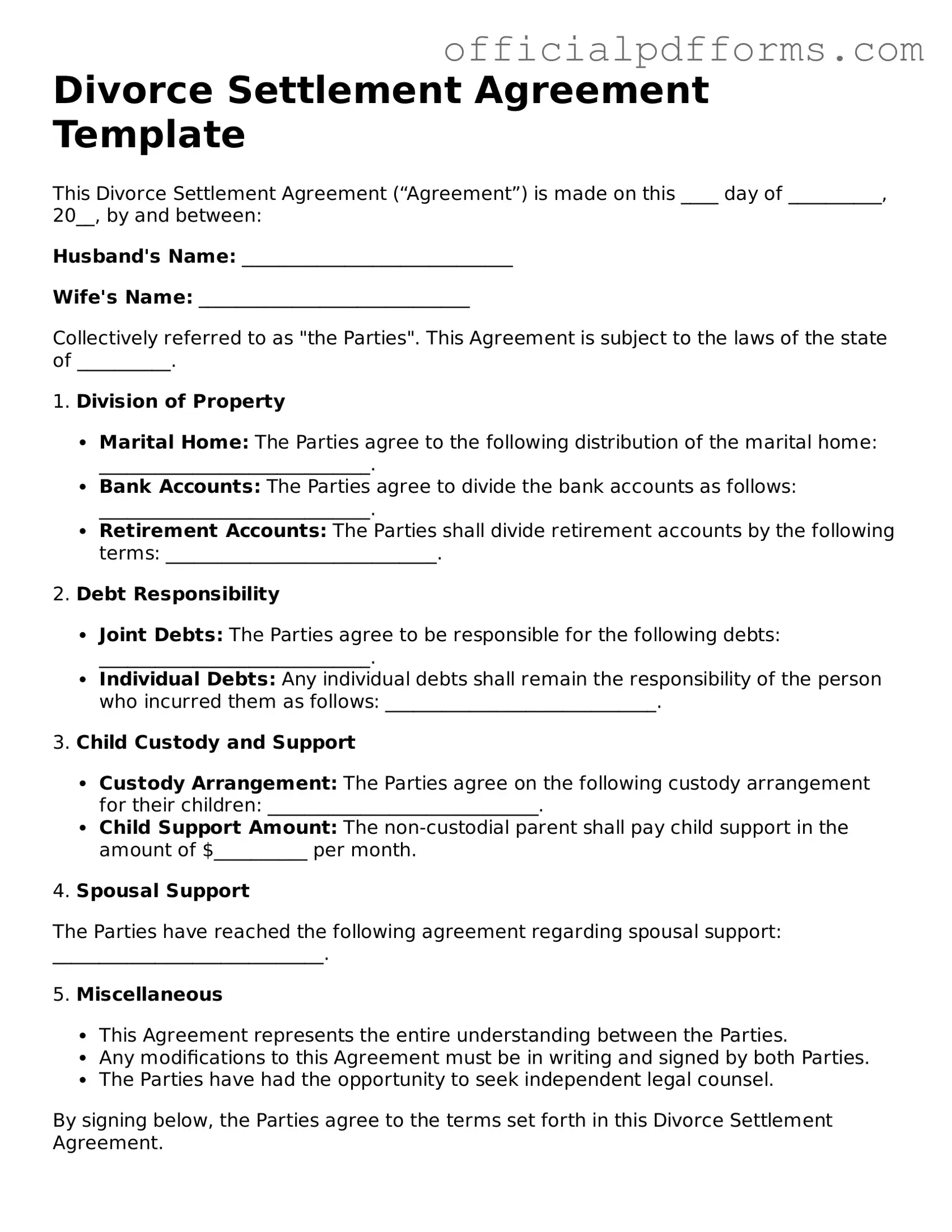What is a Divorce Settlement Agreement?
A Divorce Settlement Agreement is a legal document that outlines the terms of a divorce between two parties. It details how assets, debts, child custody, and support will be handled post-divorce. This agreement is crucial as it helps both parties understand their rights and responsibilities, ensuring a smoother transition into separate lives.
What should be included in a Divorce Settlement Agreement?
When drafting a Divorce Settlement Agreement, several key elements should be included:
-
Division of Assets:
Clearly outline how marital property, such as homes, cars, and bank accounts, will be divided.
-
Debt Allocation:
Specify how any debts incurred during the marriage will be handled.
-
Child Custody and Support:
If children are involved, detail custody arrangements and any child support payments.
-
Spousal Support:
Address whether one spouse will pay alimony and the terms surrounding it.
-
Other Considerations:
Include any other agreements or stipulations that are relevant to the divorce.
How is a Divorce Settlement Agreement enforced?
Once both parties have signed the Divorce Settlement Agreement, it becomes legally binding. If one party fails to adhere to the terms, the other can seek enforcement through the court. This may involve filing a motion to compel compliance, which can lead to legal consequences for the non-compliant party.
Can a Divorce Settlement Agreement be modified?
Yes, a Divorce Settlement Agreement can be modified, but certain conditions must be met. If both parties agree to the changes, they can draft a new agreement or an amendment to the original. However, if one party does not consent, modifications may require court approval, particularly if they involve child custody or support arrangements.
What happens if we cannot agree on the terms?
If both parties cannot reach an agreement on the terms of the divorce, they may need to engage in mediation or seek assistance from a legal professional. Mediation involves a neutral third party who can help facilitate discussions and negotiations. If mediation fails, the case may proceed to court, where a judge will make the final decisions regarding the divorce terms.
Is legal representation necessary for a Divorce Settlement Agreement?
While it is not legally required to have an attorney when creating a Divorce Settlement Agreement, having legal representation is highly advisable. An attorney can provide valuable guidance, ensure that your rights are protected, and help avoid potential pitfalls. They can also assist in negotiating terms that are fair and equitable, which is particularly important in complex cases involving children or significant assets.
